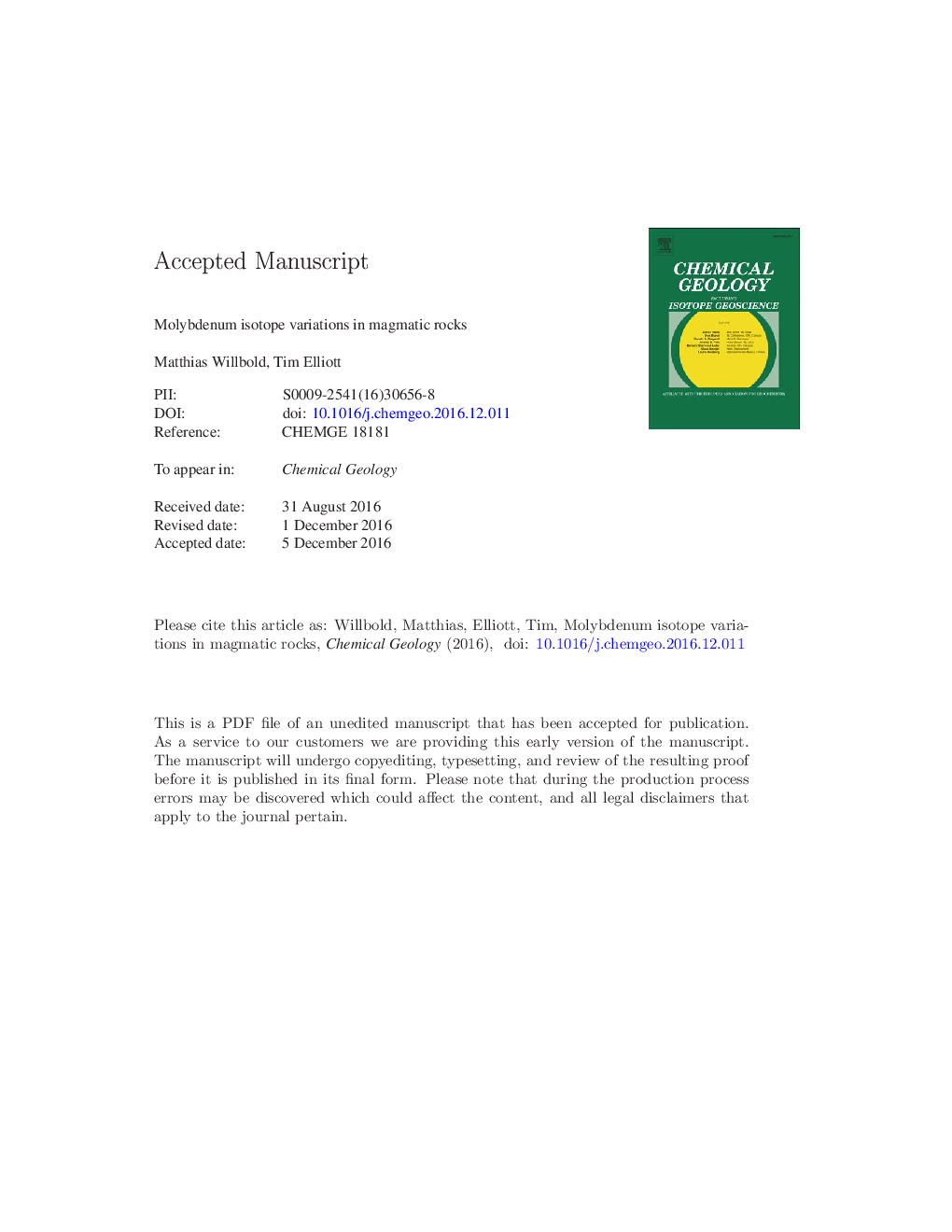| Article ID | Journal | Published Year | Pages | File Type |
|---|---|---|---|---|
| 5782794 | Chemical Geology | 2017 | 33 Pages |
Abstract
Chondritic meteorites display a remarkably homogeneous δ98/95Mo of â 0.16 ± 0.02â° suggesting a similar bulk composition for the inner solar system and thus the Earth. Residual Mo in the mantle after core formation is expected to be isotopically heavy but for temperatures in excess of 2500 K, typically proposed for core-mantle equilibration, the difference in δ98/95Mo of the mantle relative to chondrite is < 0.1â°. Analyses of Mo isotopes in mid-ocean ridge basalts suggest a slightly sub-chondritic composition of the depleted mantle (δ98/95Mo = â 0.21 ± 0.02â°). Similarly, late Archean komatiites yield slightly sub-chondritic δ98/95Mo of ca. â 0.21 ± 0.06â° suggesting that the mantle may have maintained a similar Mo isotope composition throughout the post-Archean. The Mo isotope composition of the continental crust is currently the least well-constrained value of major geochemical reservoirs. A preliminary estimate available for maximum value for the upper continental crust yields a super-chondritic δ98/95Mo of ca. + 0.15â°. The value of the bulk continental crust remains unknown but is likely to be lower. Assuming a chondritic bulk silicate Earth differentiates solely into continental crust and depleted mantle reservoirs, the δ98/95Mo of the average continental crust would range between + 0.1 and + 0.35â°. This is broadly compatible with the initial observations, making Mo the first non-radiogenic isotopic system to show such an apparent complementarity between the continents and mantle reservoirs. Given that deep recycled crust is characterised by δ98/95Mo lower than that of depleted mantle, subduction provides a mechanism by which to affect this change.
Keywords
Related Topics
Physical Sciences and Engineering
Earth and Planetary Sciences
Geochemistry and Petrology
Authors
Matthias Willbold, Tim Elliott,
